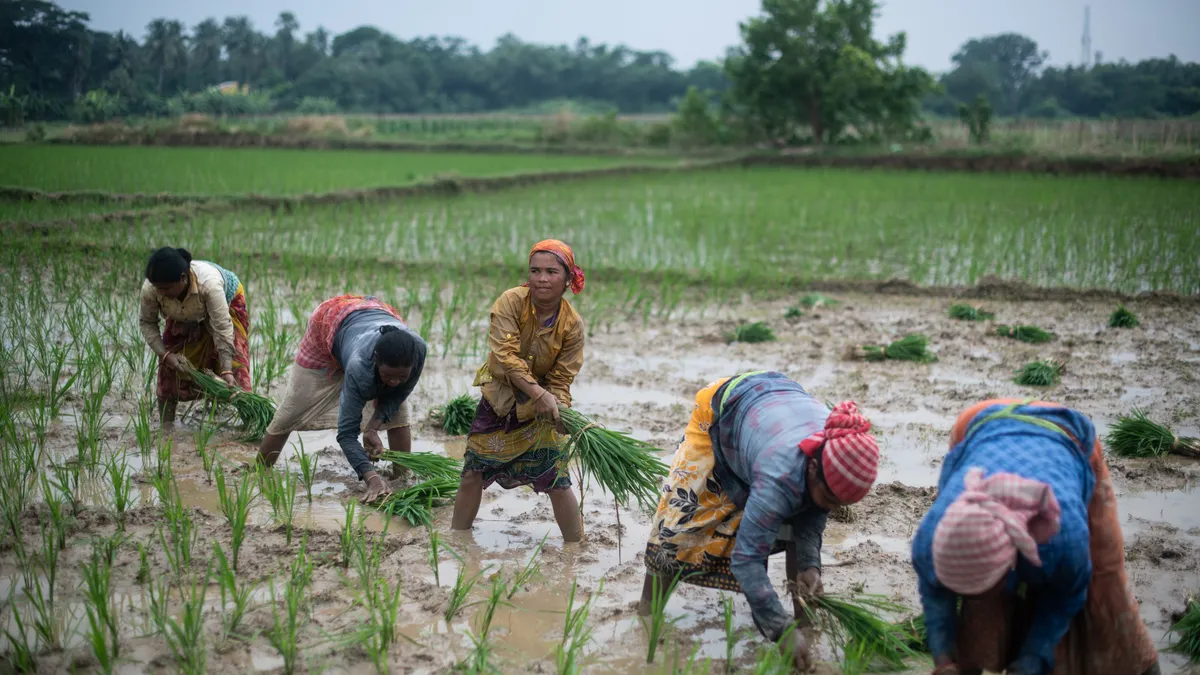Dive Brief:
- India banned exports of non-basmati white rice on Thursday, raising fears of global price inflation.
- The country, which is the world's largest rice exporter, said the move was necessary to rein in rising domestic prices. Non-basmati rice makes up approximately 25% of India's total rice exports.
- Industry group USA Rice called on the Biden administration to initiate a dispute with the World Trade Organization over the export ban. The association says India is hoarding rice stocks to eventually dump them on world markets at artificially low prices.
Dive Insight:
India's ban comes as experts were already predicting a second consecutive year of declining global rice supplies. With India making up 40% of the world's rice exports, the prohibition could further roil global supply at a time when other countries are expecting production declines.
India placed a 20% tariff on non-basmati rice last August, but said it wasn't enough to slow exports and keep domestic supply stable. Despite price increases, rice from India remained the cheapest among Asian exporters, the U.S. Department of Agriculture reported last month.
The ban will likely push more countries to rely on major producers such as Thailand and Vietnam. However, with a late rainy season clouding the production outlook in parts of Asia, countries such as Pakistan, China and the United States — which are all expected to see increased harvests — could also benefit.
Rice stocks in India are expected to decline 2 million tons in the 2023-2024 crop year, according to the USDA, though the country is still forecasted to see its second-highest production level on record.
Higher production forecasts have led U.S. exporters to argue that India is stockpiling rice to destabilize global markets and undermine competitors in the long-term.
“This is just another example of India playing games with global food security,” Bobby Hanks, chair of the USA Rice International Trade Policy Committee, said in a statement. “With this action, India can quickly build more stocks that they’ll eventually dump back on the world market at dirt cheap prices and continue this cycle again.”
India implemented a similar export ban in late 2007, causing prices to triple in less than six months even though world production was enough to meet demand. The country's move to then ease the ban in 2012 helped it become a world leader in rice exports, the USDA reported.











